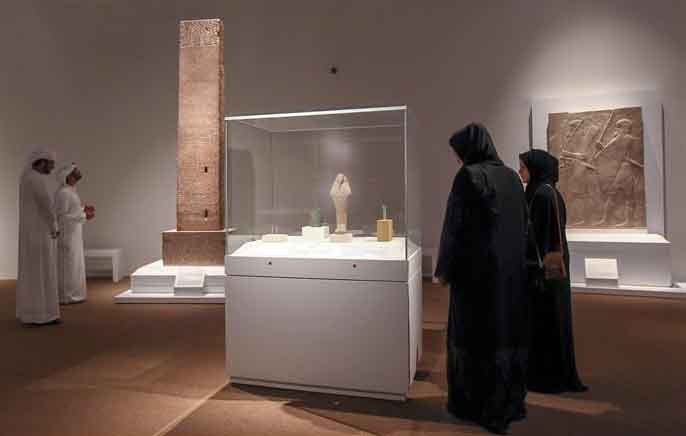ID :
325734
Tue, 04/22/2014 - 10:19
Auther :
Shortlink :
https://oananews.org//node/325734
The shortlink copeid
History of the World in 100 Objects exhibition to run for 100 Days at Manarat Al Saadiyat

Abu Dhabi (WAM): Leading up to the eagerly anticipated opening of Zayed National Museum in 2016, the Abu Dhabi Tourism '&' Culture Authority (TCA Abu Dhabi) in collaboration with the British Museum, will open A History of the World in 100 Objects - an exhibition that captures a history of the world through a vivid display of compelling objects.
Open for 100 days from 23rd April - 1st August at Manarat Al Saadiyat on Saadiyat Island, the exhibition will allow visitors to travel back in time and across the globe to see how humans have shaped the world, and been shaped by it.
Curated by Becky Allen from the British Museum, A History of the World in 100 Objects presents 100 significant objects in a narrative that brings contemporary audiences face-to-face with cultures across time and space. Bringing to life the material culture of the past, the exhibition will feature a variety of objects such as a lifelike cast bronze hand from Yemen that was made between 100 and 300 CE, an Egyptian granite statue of the Egyptian pharaoh Ramesses II discovered on Elephantine Island at the Temple of Khnum, and the famous Royal Game of Ur, found in a royal cemetery in southern Iraq and estimated to be around 4,500 years old.
Within the exhibition narrative the story continues to contemporary time and to the celebration of today's objects such as Reem Al Marzouqi's recently conceived Prototype Foot-controlled Car. An Emirati student from the UAE University, Reem's car showcases how inventors of today create objects that add new stories to our history.
Salama Al Shamsi, Project Manager, Zayed National Museum said: "Navigating an unparalleled collection of historic objects that provides visitors with an opportunity to learn more about where we came from and ultimately who we are, A History of the World in 100 Objects places the cultural significance of the UAE and the Arab World in general within the context of human history."
Through exhibitions like this, TCA Abu Dhabi aims to put the Zayed National Museum story into the context of the Middle East and the wider world, while encouraging the development of a cultural ecosystem that will promote and celebrate the position of the UAE within the global community.
Located in a dramatic new building at the centre of the Saadiyat Cultural District, and commanding views of Abu Dhabi and the Gulf beyond, Zayed National Museum will celebrate the unification of the Emirates and their transformation into a modern nation under Sheikh Zayed bin Sultan Al Nahyan (1918-2004) - the ‘Father of the Nation.'
Becky Allen, the British Museum's Curator of A History of the World in 100 Objects, said, "A History of the World in 100 Objects celebrates human ingenuity, placing the things we make and use in the spotlight. The exhibition has a global scope, helping visitors to see the similarities that connect human beings across time and place. The objects we use today express something about the world in the present moment, just as the objects used by our ancestors tell us about the cultures of the past. Whether ancient or modern, all the objects in the exhibition express human hopes, desires and ambitions. At its heart, this exhibition is about investigating and honouring the power of objects."
A lecture by the Director of the British Museum, Neil MacGregor, entitled Unlocking Objects, will take place at 6.30pm on Tuesday, 22nd April. Neil MacGregor will explore a range of objects showcased in the exhibition, and examine their unique power to convey a story and forge global connections.
In addition to Neil MacGregor's lecture, there will be a full public program of workshops, tours and seminars derived from the objects in the exhibition. For example, in a workshop dedicated to juniors, participants can create a blue-and-white design on pre-glazed earthenware using ceramic paint, or in another for adults, in a workshop inspired by the German artist Albrecht Durer (1471-1528) and his famous Rhinoceros woodcut (1515), people can learn about techniques and processes of woodblock printmaking. – Emirates News Agency, WAM





